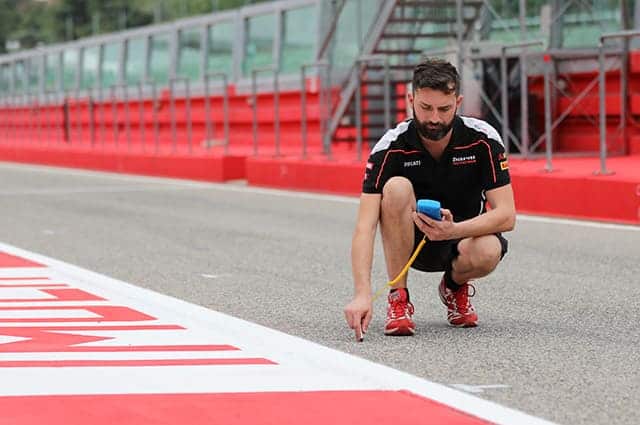
For many of us, slight changes in temperature may go unnoticed. However, in the world of Motorsport, even small increases or decreases of just one or two degrees can significantly impact how teams approach a race or session. Understanding and reacting to these changes is essential for teams and drivers to perform at their best. Air temperature and track temperature are the two most essential temperatures in Motorsport. Although they are related, they are not the same. On a sunny day, both air and track temperatures will increase, but when cloud cover arrives, the air temperature drops immediately while the track temperature takes longer to cool down. The rate at which tracks heat up depends on the surface materials. For example, tracks with high levels of bitumen tend to be darker, which results in them absorbing more sunlight and heating up faster.
Track temperature: how does it impact tire degradation ?
Tire pressure is impacted by temperature variations that affect different parts of a car or bike, but the biggest impact is usually on the tires. The track temperature affects how hot the tires will run, which in turn impacts the grip level and the tire pressure degradation rate. Racing tires have a narrow operating window, where they are at the peak of their performance in terms of grip levels. Operating below this window decreases the mechanical grip and performance, while operating above it can cause a drop in performance and increase tire wear. Missing the optimum tire operating window by a few degrees can result in a loss of tenths of a second in lap time. The front and rear tires do not operate at the same temperatures, and changes in track temperature will impact them differently, leading to uneven grip levels. This will also affect the balance of the car or bike, so teams must regularly adjust the set-up to respond to these changes. Teams must also consider the temperature of the tires and the track temperature when choosing which tires to use during the race.
Why do drivers have a role in tire degradation?
Drivers also play a role in responding to temperature changes. Their driving style can impact tire temperatures, and they may drive more aggressively if they want to put heat into the tires, particularly in high-speed corners. If the track temperature changes dramatically during a race, drivers have various ways to adapt. In addition to driving more aggressively, they can alter their driving lines to suit the balance of the car or bike. In conclusion, temperature is a crucial aspect in Motorsport, as even minor changes can have a significant impact on the performance of a race or session. Teams and drivers must continuously monitor and react to temperature changes to ensure the best possible performance. Teams must keep track of air and track temperatures, and make decisions based on the information available to them. Drivers must be aware of how their driving style impacts tire temperature, and be prepared to adapt to changing conditions on the track. With a deep understanding of the impact of temperature in Motorsport, teams and drivers can perform at their best, and push the limits of their performance.
